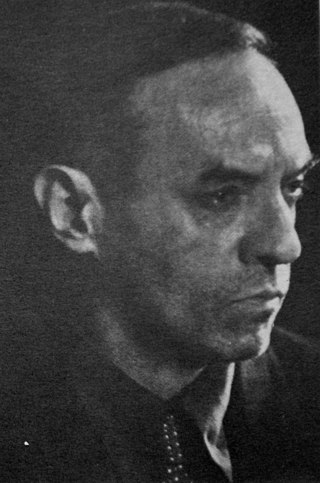
Xul Solar was the adopted name of Oscar Agustín Alejandro Schulz Solari, an Argentine painter, sculptor, writer, and inventor of imaginary languages.

Tarsila de Aguiar do Amaral was a Brazilian painter, draftswoman, and translator. She is considered one of the leading Latin American modernist artists, and is regarded as the painter who best achieved Brazilian aspirations for nationalistic expression in a modern style. As a member of the Grupo dos Cinco, Tarsila is also considered a major influence in the modern art movement in Brazil, alongside Anita Malfatti, Menotti Del Picchia, Mário de Andrade, and Oswald de Andrade. She was instrumental in the formation of the aesthetic movement, Antropofagia (1928–1929); in fact, Tarsila was the one with her celebrated painting, Abaporu, who inspired Oswald de Andrade's famous Manifesto Antropófago.
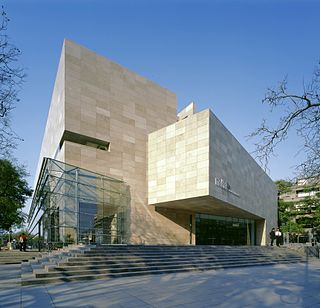
The Latin American Art Museum of Buenos Aires is a museum located on Figueroa Alcorta Avenue, in the Palermo section of Buenos Aires.
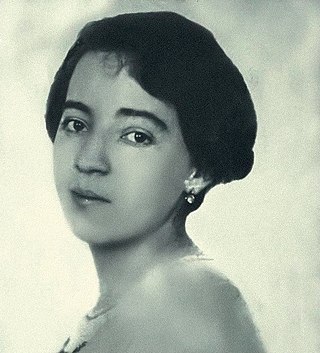
Anita Catarina Malfatti is heralded as the first Brazilian artist to introduce European and American forms of Modernism to Brazil. Her solo exhibition in Sao Paulo, from 1917–1918, was controversial at the time, and her expressionist style and subject were revolutionary for the complacently old-fashioned art expectations of Brazilians who were searching for a national identity in art, but who were not prepared for the influences Malfatti would bring to the country. Malfatti's presence was also highly felt during the Week of Modern Art in 1922, where she and the Group of Five made huge revolutionary changes in the structure and response to modern art in Brazil.

Augusto de Campos is a Brazilian writer who was a founder of the Concrete poetry movement in Brazil. He is also a translator, music critic and visual artist.
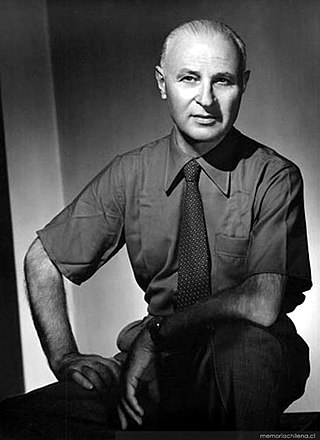
Emilio Pettoruti (1892–1971) was an Argentine painter, who caused a scandal with his avant-garde cubist exhibition in 1924 in Buenos Aires. At the beginning of the twentieth century, Buenos Aires was a city full of artistic development. Pettoruti's career was thriving during the 1920s when "Argentina witnessed a decade of dynamic artistic activity; it was an era of euphoria, a time when the definition of modernity was developed." While Pettoruti was influenced by Cubism, Futurism, Constructivism, and Abstraction, he did not claim to paint in any of those styles in particular. Exhibiting all over Europe and Argentina, Emilio Pettoruti is remembered as one of the most influential artists in Argentina in the 20th century for his unique style and vision.

Martín Sastre is a Uruguayan film director and contemporary media artist working with film, video, sculpture, photography and drawing.
The Anthropophagic Manifesto was published in 1928 by the Brazilian poet and polemicist Oswald de Andrade, a key figure in the cultural movement of Brazilian Modernism and contributor to the publication Revista de Antropofagia. It was inspired by "Abaporu," a painting by Tarsila do Amaral, modernist artist and wife of Oswald de Andrade. The essay was translated to English in 1991 by Leslie Bary;
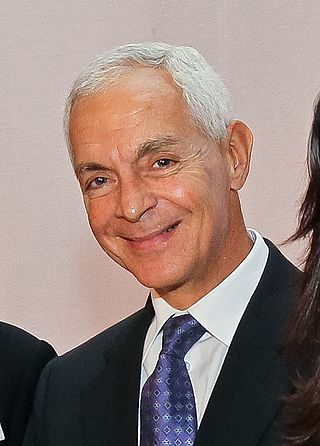
Eduardo Francisco Costantini is an Argentine real estate developer and businessman and the founder and chairman of the Museum of Latin American Art of Buenos Aires (MALBA). In April 2022, his net worth was estimated at US$1.6 billion.

Manuel Espinosa was an Argentinian painter.
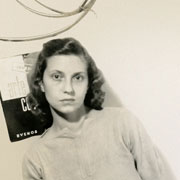
Lidia "Lidy" Elena Prati (1921–2008) was an Argentine painter who was known for her abstract, geometric paintings. Her artwork called into question representational art and was influential in defining the concrete art movement in Latin America. Prati contributed to the publication of Arturo magazine and during the 1940s, was one of the founding members of the Asociación Arte Concreto-Invención (AACI) art movement along with Enio Iommi and Tomás Maldonado. While she is primarily known for her concrete art paintings, Prati also worked in graphic and layout design and worked with textiles and jewelry.

Andrés Francisco Giles is an Argentine artist based in New York. He has exhibited internationally since 1999. Among the group exhibits he participated in, worthy of mention is the Okupa exhibit that took place at the ArteBA event in 2012.

Alfredo Nicolás Guttero was an Argentine modernist painter and art promoter.

Marcelo Pombo is an Argentine artist. His work is in the collections of the Museo Nacional de Bellas Artes, the Museo de Arte Moderno de Buenos Aires, the MALBA, Museo de Arte Latinoamericano de Buenos Aires, the Museo Castagnino + macro, the Blanton Museum of Art of The University of Texas at Austin, among others.
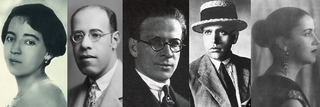
The Grupo dos Cinco were a group of influential painters and writers associated with Brazilian Modernism. They worked together from approximately 1922–1929, although their individual work as artists and poets existed prior to this and continued after their collaboration ended. Grupo dos Cinco included Anita Malfatti, Tarsila do Amaral, Menotti Del Picchia, Oswald de Andrade and Mario de Andrade. While Malfatti and Amaral were painters, their three male counterparts were poets and writers. Grupo dos Cinco are known for their pivotal role in seeking what it is to be Brazilian as well as their work and involvement with the Semana de Arte Moderna, although Amaral did not participate. As a group, they developed ideas and manifestos that would inspire future generations of Brazilian artists such as the Pau-Brasil poetry manifesto and Antropofagia movement.
Inés Katzenstein is an Argentine curator, art historian, and art critic who specializes in Latin American art.

Sarah Grilo was an Argentine painter who is best known for her abstract gestural paintings. Married to the artist José Antonio Fernández-Muro, she lived in Buenos Aires, Paris, New York and Madrid.

Andrea Graciela Giunta is an Argentine art historian, professor, researcher, and curator.
Silvia Rivas is an Argentine visual artist known for her multi-channel video installations. In Latin America she is considered a precursor in the area of expanded video. Her work is characterized by the crossing of materialities and technologies in which she uses both electronic devices and ancestral techniques. Her production is organized in thematic series of video installations, drawings, photographs or objects. Interested in revealing the metaphorical power of different materialities, she uses the electronic medium and the moving image to record stillness, the imminent and the subjective perception of time.
















